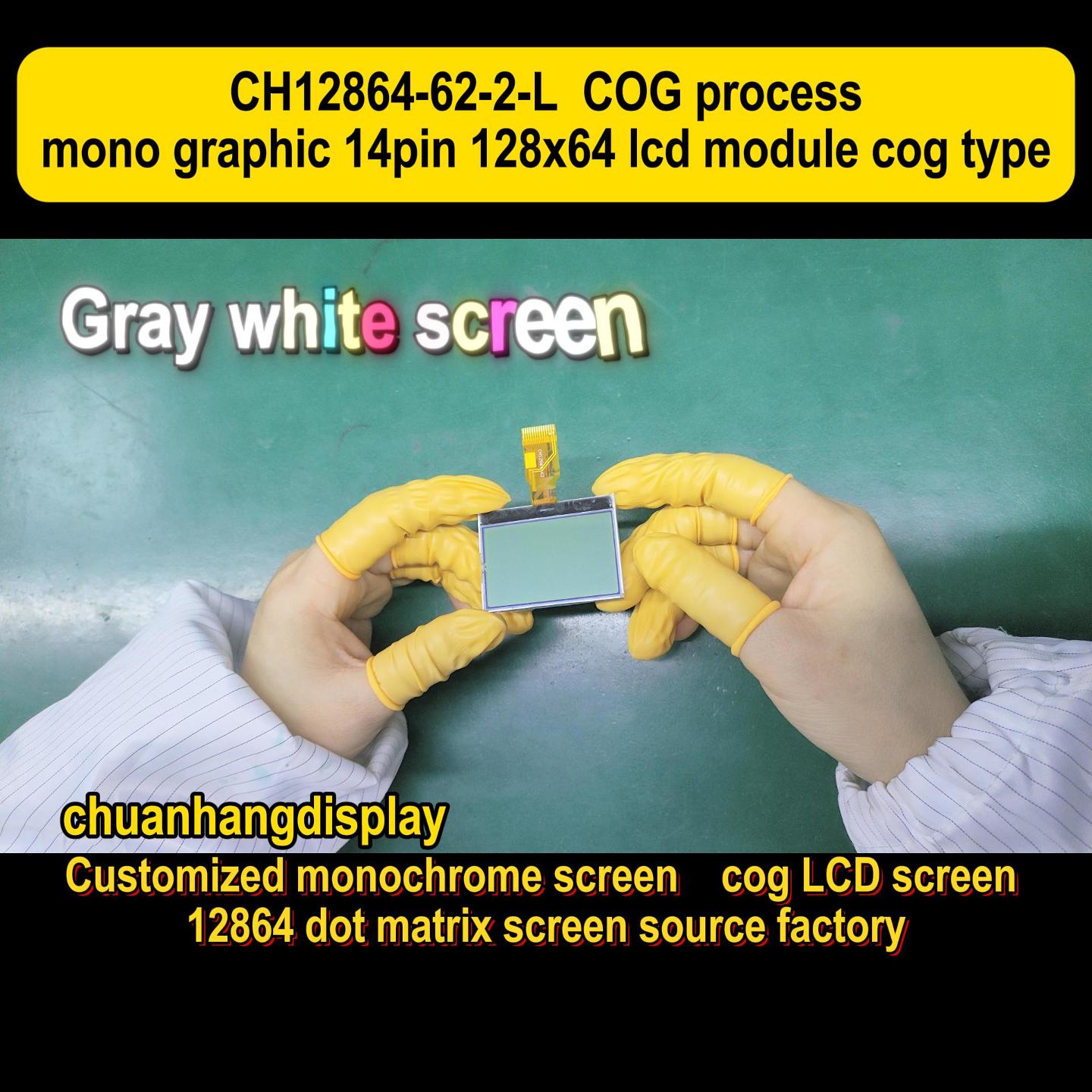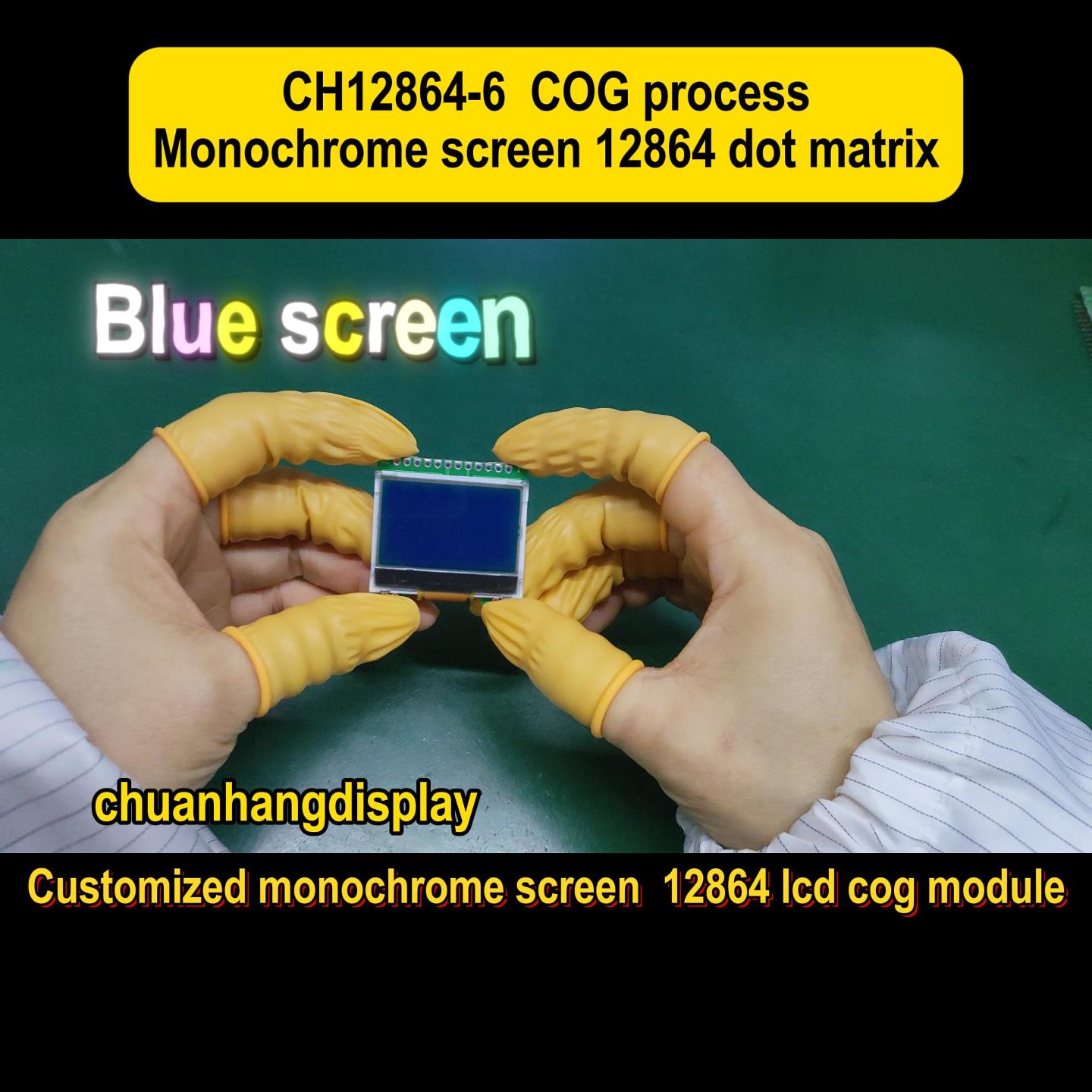In the world of electronic interfaces, the LCD 16x4 display stands as a versatile and widely adopted component. This specific format—showing four lines of text with 16 characters each—offers a perfect balance between information capacity and physical size. For engineers, product designers, and hobbyists, selecting the right LCD 16x4 module is a critical step that can influence the functionality, cost, and user experience of a final product. This guide will walk you through the essential considerations for choosing an LCD 16x4, highlighting how to leverage its capabilities and when to opt for a custom LCD 16x4 solution from a trusted supplier like Chuanhang Display.

An LCD 16x4 display is a character-based liquid crystal display module. The "16x4" designation means it has a grid capable of displaying 4 rows of text, with each row holding up to 16 alphanumeric characters, symbols, or simple custom glyphs. Unlike graphical displays that render pixels individually, a character LCD like the 16x4 uses a built-in controller that manages a predefined set of characters. This makes it simpler to interface with and program, as you send character codes rather than manipulating individual pixels.
These modules typically include a LED backlight (blue, white, or green are common) for visibility in low-light conditions. They are the big brother to the ubiquitous 16x2 display, offering twice the informational real estate without a significant increase in footprint, making them ideal for applications that require more detailed user prompts, data logging, or multi-parameter monitoring. For many standard applications, an off-the-shelf LCD 16x4 from Chuanhang Display provides a reliable and cost-effective solution.
The expanded space of a 16x4 LCD makes it suitable for a broader range of devices compared to smaller character displays. Its use cases span across various industries:
Industrial Control Panels: Used in Programmable Logic Controllers (PLCs), temperature controllers, and machine interfaces to show multiple parameters simultaneously—like setpoints, actual values, status messages, and error codes—all on one screen.
Laboratory and Test Equipment: Perfect for displaying complex readings, sensor data, and calibration menus on oscilloscopes, power supplies, and environmental monitors.
Point-of-Sale (POS) Systems: Often integrated into retail terminals to show transaction details, item lists, and instructions for cashiers.
Telecommunications and Networking: Embedded in routers, switches, and servers to provide status information, IP addresses, and network diagnostics.
Audio/Video Equipment: Found in mixers, amplifiers, and broadcast equipment to show channel levels, settings, and routing configurations.
The clarity and simplicity of an LCD 16x4 ensure that information is presented in an easily digestible format, reducing user error and improving interaction efficiency.
Understanding the technical underpinnings of an LCD 16x4 is crucial for seamless integration. Most modules on the market share a common foundation.
Controller: The HD44780 or a compatible controller is the industry standard. This commonality means that libraries and code examples are widely available for platforms like Arduino, Raspberry Pi, and other microcontrollers.
Interface: The primary interface is a parallel interface, typically requiring 6 to 11 I/O pins from your microcontroller. However, to save precious I/O pins, many manufacturers, including Chuanhang Display, offer modules with soldered I2C or SPI adapter boards. This serial interface reduces the connection to just two or three wires, simplifying wiring and PCB design.
Voltage Levels: Most standard LCD 16x4 displays operate at 5V, but 3.3V variants are becoming increasingly common to cater to modern low-power microcontrollers.
Dimensions and Viewing Area: The physical viewable area is standardized to accommodate the 16x4 character set, but the overall module dimensions and mounting hole patterns can vary slightly between suppliers. It's always wise to check the mechanical drawing before finalizing your design.
When sourcing an LCD 16x4, confirming these specifications with your supplier ensures compatibility and avoids last-minute design changes.

Not all LCD 16x4 displays are created equal. Here are the five key factors to guide your selection process:
Backlight Color and Brightness: The choice of backlight color (e.g., white, blue, green, amber) often comes down to aesthetics and application context. Blue on white is popular for high contrast, while green is often chosen for a classic look. More importantly, consider the brightness (measured in nits or cd/m²). If your device will be used in brightly lit environments or outdoors, you may need a high-brightness LCD 16x4 or one with an optional transflective feature that uses ambient light to enhance readability.
Operating Temperature Range: Standard commercial-grade modules typically operate from 0°C to +50°C or 60°C. For applications in industrial settings, automotive, or outdoors, you will need an extended temperature LCD 16x4. Chuanhang Display can provide industrial-grade versions that function reliably from -20°C to +70°C and beyond, ensuring stable performance in harsh conditions.
Viewing Angle: The viewing angle determines how clearly the text can be read when not looking at the screen directly head-on. Most character LCDs use a Twisted Nematic (TN) technology, which has a limited viewing angle. If your application requires viewing from the side or above, discuss this with your provider. Opting for a custom LCD 16x4 with an improved viewing angle might be necessary.
Interface Preference (Parallel vs. I2C/SPI): As mentioned, the interface is a critical decision. If your microcontroller has plenty of I/O pins and you prioritize speed, the parallel interface is fine. For most modern applications, especially compact ones, an LCD 16x4 with a pre-attached I2C serial interface adapter is the superior choice for its simplicity and efficiency.
Customization Requirements: Sometimes, a standard module won't cut it. This is where a partnership with a manufacturer like Chuanhang Display becomes invaluable. You might need a custom LCD 16x4 with:
A specific outline dimension or mounting hole pattern.
A special backlight color or brightness level.
An extended temperature range.
A proprietary connector or FPC (Flexible Printed Circuit) cable.
Integrated touch functionality (though less common for character displays).
Evaluating your project against these five factors will lead you to the most suitable LCD 16x4 display, balancing performance, cost, and development time.
The Advantage of Sourcing from a Specialist Manufacturer
Choosing a supplier like Chuanhang Display for your LCD 16x4 needs offers significant benefits beyond just product acquisition. As a specialized manufacturer, we provide:
Consistent Quality and Reliability: Our displays undergo rigorous quality control to ensure long-term performance and minimal dead-pixel rates.
Technical Support: We offer deep technical expertise to help you resolve interface issues or optimize your design for integration.
Customization Flexibility: Whether you need a minor tweak or a fully custom LCD 16x4, we have the engineering capability to deliver a solution tailored to your exact specifications.
Supply Chain Stability: We maintain a robust supply chain, ensuring you receive your modules on time, every time, which is crucial for production planning.
Q1: What is the difference between a 16x4 LCD and a 20x4 LCD?
A1: The core difference is the number of characters per line. A 16x4 LCD displays 16 characters on each of its 4 lines, while a 20x4 displays 20 characters per line. The 20x4 offers more horizontal space for text but has a wider physical module. The choice depends on how much information you need to display at once and the available panel space on your device.
Q2: Can I create custom characters on an LCD 16x4 display?
A2: Yes, you can. The HD44780 standard controller allows for the creation of up to 8 custom 5x8 pixel characters at a time. These can be used to display simple logos, special symbols, or small bar graphs that are not in the standard character set. This is a common feature supported by most Arduino and microcontroller libraries.
Q3: My LCD 16x4 display is only showing black boxes. What is wrong?
A3: A row of black boxes typically indicates an initialization problem. The display's controller was not properly initialized by your code upon power-up. Ensure that your software includes the correct initialization sequence with the right timing delays as specified in the datasheet. Also, double-check your wiring and contrast potentiometer adjustment.
Q4: Are there sunlight-readable versions of the LCD 16x4?
A4: Yes, standard transmissive LCDs are difficult to read in direct sunlight. For such applications, you need a transflective or high-brightness LCD 16x4. Chuanhang Display offers options with high-brightness LED backlights and transflective polarizers that use sunlight to enhance the display, making them readable even in bright outdoor conditions.
Q5: How do I order a custom LCD 16x4 display from Chuanhang Display?
A5: Initiating a custom order is straightforward. Contact our sales team with your requirements, including desired specifications (dimensions, temperature range, interface, backlight), a target price, and an estimated annual usage volume. Our engineering team will then review your needs and provide a feasibility assessment, a quotation, and lead time. We guide you through the entire process from prototyping to mass production.